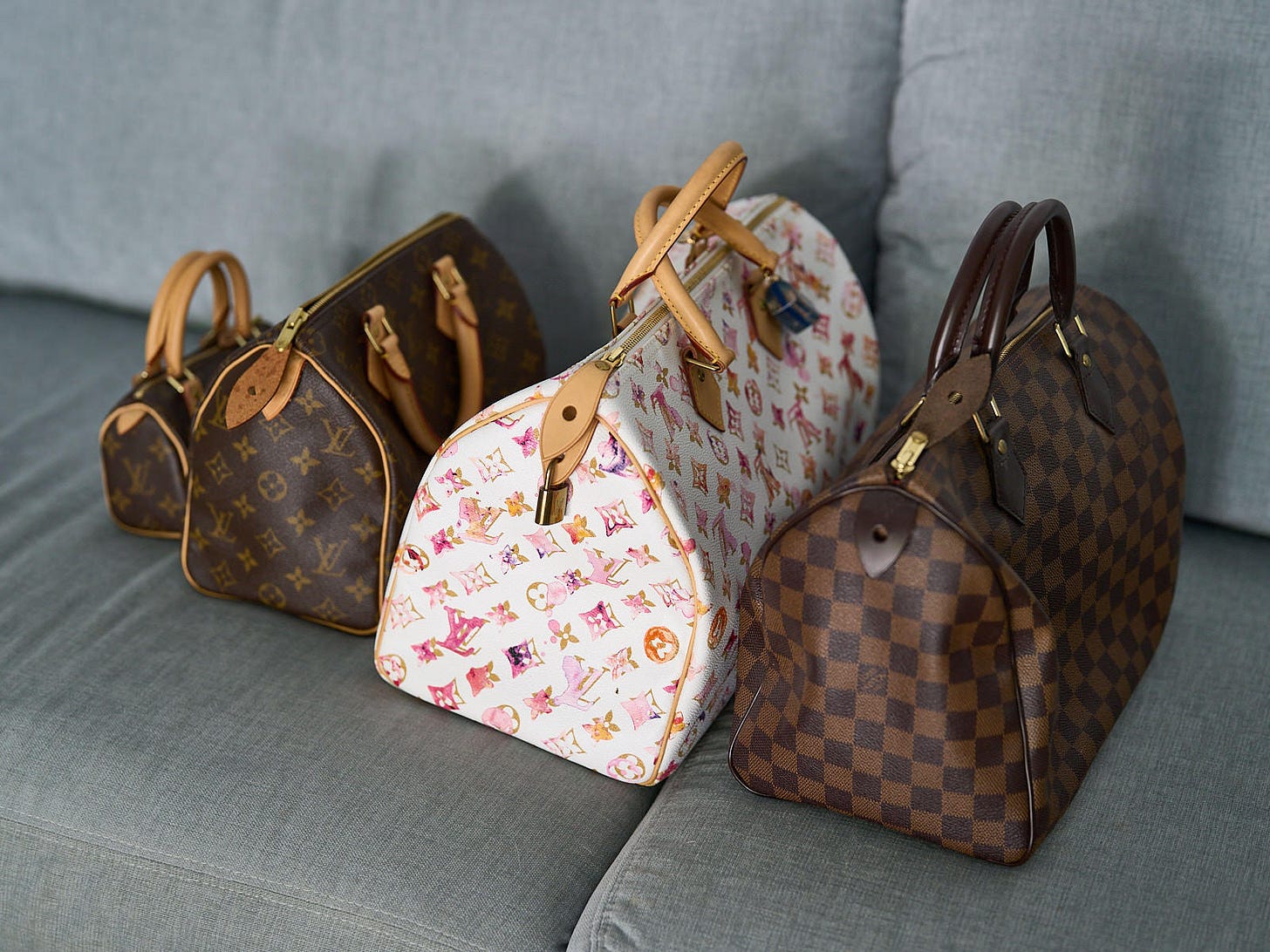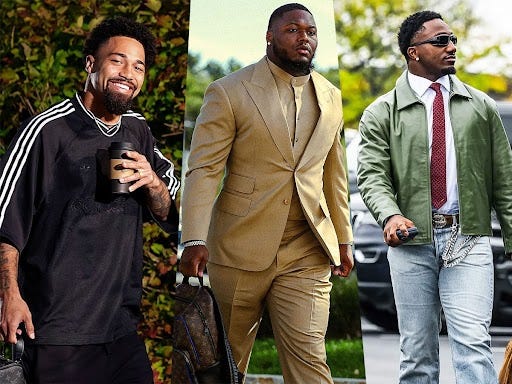As a dark-skinned, fairly overweight (occasionally teetering on the obese), and, in turn, inherently insecure teen growing up, my relationship with clothing has been, for the most part, somewhat contentious.
But there’s nothing that struck greater terror in my mind—and kept me up at night—than pants. Specifically, jeans—those everyday staples that still send chills down my spine as I revisit my questionable tweenage life choices. Mercifully enough, this doesn’t happen often.
It’s almost Kafka-esque, in fact. A friend dubs the literary genius’s work “the stuff of nightmares turned into redemptive, consoling art, while he himself was enchained by his deepest, most harmful dark inner feelings that make one want to hug him and say ‘It’s all right. None of it is your fault.”
There I was, seeking consolation in those perpetually paparazzo-ed pipe-dream denim – a mid-nineties’ Carolyn Bessette leaving her Tribeca apartment in those annoyingly perfect, pure Atlantic ocean blue Calvin Klein carpenters, or Gisele serving that quintessential off-duty East Coast supermodel chic in a crisp white tank and stonewashed drainpipes – when what I really should have been seeking was a therapist.
And the more I scrolled, the scarier it became to put myself out there in any form. Those jeans, after all, as Liana Satenstein writes of her own denim dilemmas, “are crafted for assless Amazons with vertiginous legs. At least for me – and my butt – I never win in the denim market.”
Why even try, right?
Which is why something was comforting – redeeming even – when Gap’s latest campaign, “Better in Denim,” dropped last month, featuring LA-based girl group KATSEYE. It was bold, it was refreshing, and it was fearlessly and authentically itself. And somewhere along the way, it allowed that insecure little kid in yours truly to be himself, too.
The Great Denim Debate of 2025
Now, while the commercial’s success hinges on the highs of KATSEYE’s cross-cultural appeal (there are members of Filipino, Swiss, Latin American, Korean and Indian origins), it also, in the process, ushered in the comeback of Gap’s quintessentially Y2K-coded low-rise, long-and-lean jeans, worn by the cast as they gyrate to the tune of Kelis’ iconic Milkshake.

And in the denim debate with American Eagle (“Sydney Sweeney has great jeans,” read its latest scandalizing campaign) that has set the Internet alight in outrage, dismissal of the outrage, and ultimately, outrage at the dismissal of the outrage, Gap emerged as the clear champion. Gap’s Milkshake, it seems, has, in fact, brought all the boys to the yard.
But denim has also long been the center of a generational turf war—for millennials, with their penchant for “horrifying their elders with their blogs and avocado toast and lack of urgency around marriage,” skinny jeans spelt liberation. Worn with business-casual blazers, peplum tops, and Céline Luggage, they fondly reminisce about the glory days of the early 2010s.

Gen-Z, in turn, has sounded their war-cry on skinnies by declaring tent-shaped, wide-legged JNCOs and those much-dreaded millennial “mom jeans” the silhouette of the season. “The real Jean War, after all,” writes The Washington Post, “is internal: Where do you fit, and what fits you?”
What’s undeniable, at the end of the day, is that denim offers a canvas for creative, authentic expression, even if said expression occasionally makes one cringe. The material – and its far-reaching fabrications (denim purses have trended all summer) possesses an everyman ambiguity. Sweeney’s American Eagle pair retails for $89.99; Bottega’s trompe l’oeil leather jeans, on the other hand, are listed for a cool $7,000 on Net-a-Porter.
It’s this that makes it the perfect contender for normcore.
The Core Norms of Normcore
At its core, normcore typically refers to dressing normally. Lauren Sherman of ELLE quips, “for most people, dressing plainly, like a Midwestern mom, might just. . . make you look like a Midwestern mom. Could anyone really call dressing ‘normal’ a trend?” The Cut calls it “fashion for those who realize they’re one in 7 billion.”

But really, normcore, a concept coined by trend forecasting collective, K-HOLE, was far more than your average dad jeans and New Balances.
“Normcore knows,” writes Viktoriia Vasileva, “your consumer choices aren’t irrelevant, they’re just temporary. People compromise; people are inconsistent. Making one choice today and a conflicting choice tomorrow doesn’t make you a hypocrite. It just makes you complex.”
It allowed the freedom to experiment, even if it meant acting basic (“you could embrace sameness and lean into the cargo shorts of it all.”)


But what it ended up being, Sherman continues, “was fetishizing this casualization of culture,” the way the ’90s grunge look was packaged and sold off Seventh Avenue, even though Kurt Cobain’s signature hairdo, says Charles Cross of music monthly The Rocket, was simply a result of him being “just too lazy to shampoo.”
Or the way quiet luxury, aided by the viral machinery of social media, proved itself one of the biggest psyops of the 2020s.
Ultimately, what began as a way of trend-proofing oneself from the onslaught of cottagecores, mob wives, clean girls, and brat summers gave in to its own demented trend cycle; in the quest for good taste, we ended up with no taste. As former K-HOLE member Emily Segal questions, “How do we free ourselves from the prison that is our own taste?”
The Prison That is Our Own Taste
“Excuse me.”
“Can you, um, tell us where you got your, uh, shoes?”
“I think it’s right around the corner, on Avenue A. I can’t think of the name. Something Something.”
“Like, that way? Over there?”
“Yeah.”
Chloë Sevigny wrote a 1994 New Yorker profile, “can speak with some confidence about what’s happening in the street. Some say Chloë is what’s happening in the street.” And the aforementioned conversation ensues when a couple of young girls scoot up to her mid-interview, wide-eyed and in awe of her transparent jelly sandals.
Similar to most of us, the quest for our own authentic taste begins with, well, a tastemaker. And once upon a time, tastemakers—Sevigny being an excellent example—were in limited supply.


Today, however, as content-creator Cydnie Cole laments to Nylon, “There are so many people telling you what to buy, how to look, where to go, and how to act, and it’s this horrifying echo chamber that can be very difficult to ignore if you aren’t connected to yourself or what you want.”
But what is it that we do want?
At the behest of authenticity – and often our persistent (and at times, misplaced) belief in our own uniqueness – we want ourselves to stand apart. Yet, like those West Village girls in matching white tops, light-washed baggy jeans (those pants, they strike again!) and Aritzia Super Puffs, we relish the sense of community that comes with dressing alike.
It’s not that we don’t want to experiment – “Only those are unwise who have never dared to be fools,” declares the New York Times. And there really is no alternative to developing your own taste, if not by experimentation.

It’s just that originality doesn’t necessarily equate to outlandish. “Nothing of me is original,” writes Chuck Palahniuk in his novel Invisible Monsters, “I am the combined effort of everyone I have ever known.”
And as I feel chic in my own, navel-grazing vintage pair of Levi’s 511s (yes, I finally found jeans that truly fit me), my trusty Proenza Schouler soldered onto my arms, beads of sweat beginning to show underneath my shirt, I realize that it’s not the pieces I wear that make my style authentic, it’s just that they’re authentically mine.















Great to see you with your well-loved PS1, Sajid!
Trends may come and go, but real style is about wearing what makes you happy. Mixing streetwear with luxury, or any brands you love, always adds a unique touch that reflects your personality!
Great article, and great conclusion. Love your look 🙂
Jeans brands come and go (Jordache anyone?) but Levi’s never go out of style. I’ve been buying them since the 70’s in various cuts. They’ve always worked best with my curvy figure. None of the pricier brands have ever fit me. But that’s OK, more money for handbags.
OMG Sajid you are so cute! I love your style!
Sajid your pic is giving EVERYTHING!!!
Oooh love your style (and your coat!!<3)
Oh Sajid! Your picture is so lovely and your style and PS1 are so cool!
Great essay! My jeans are either Levis or Gap. My fave Levis is the 505, perfect slouchy straight leg and the 90s wide leg in dark wash. Sometimes I hit up Gap for something trendy. This is also me making my outloud wish to the universe that Levi’s bring back their Made & Crafted Line as well as their LVC line which has dwindled into nothing post covid…
I made my choice at the height of grunge (sorry, Kurt, I loved every version, packaged or not) and I’ve more or less stuck to it the past thirty ish years. Coasted right through the millenium with never a pair of skinny jeans, and plaid flannel still delights me. I’ve always enjoyed watching the trends but from a sort of hurricane’s eye. 😉
I’ve always been true to my style even if I got funny looks. I just was not into Wranglers, cowboy boots, plaid button downs, or polo-style shirts. I like loud, vibrant colors.
I don’t really follow trends. I’ll buy if it fits my style. The last bag I bought was an LV Wilshire PM. The east-west style is on-trend, and I’ve always loved that bag shape. Paired with some $17 Sincerely, Jules jeans and my favorite T-shirt, I’m set. Not interested in impressing strangers.